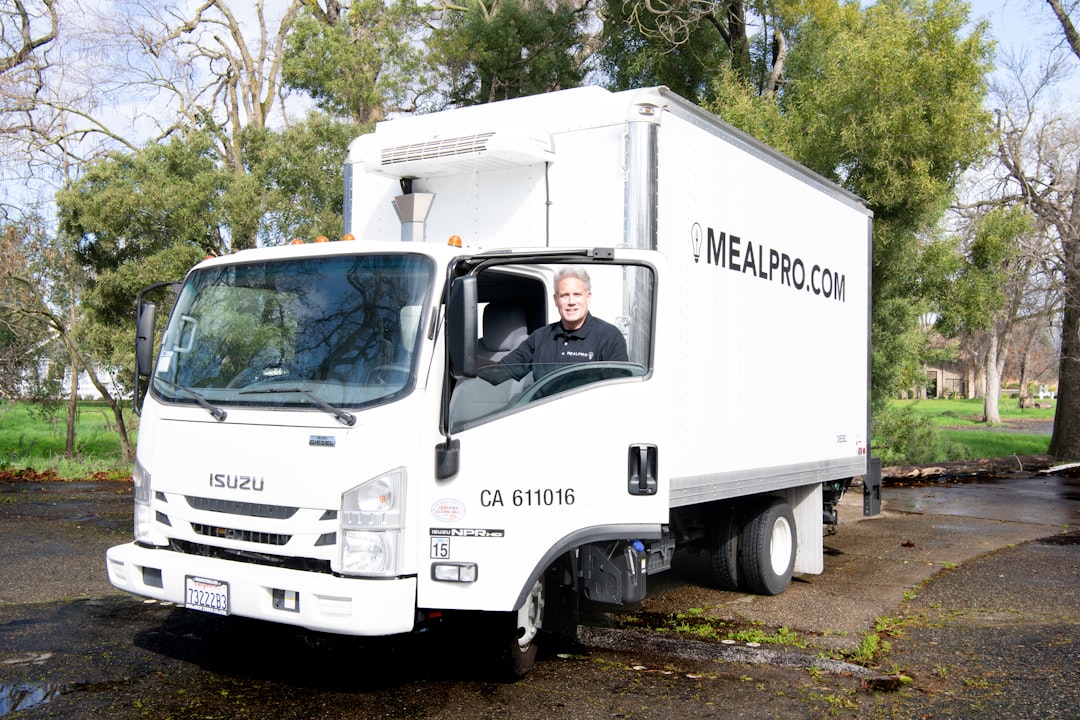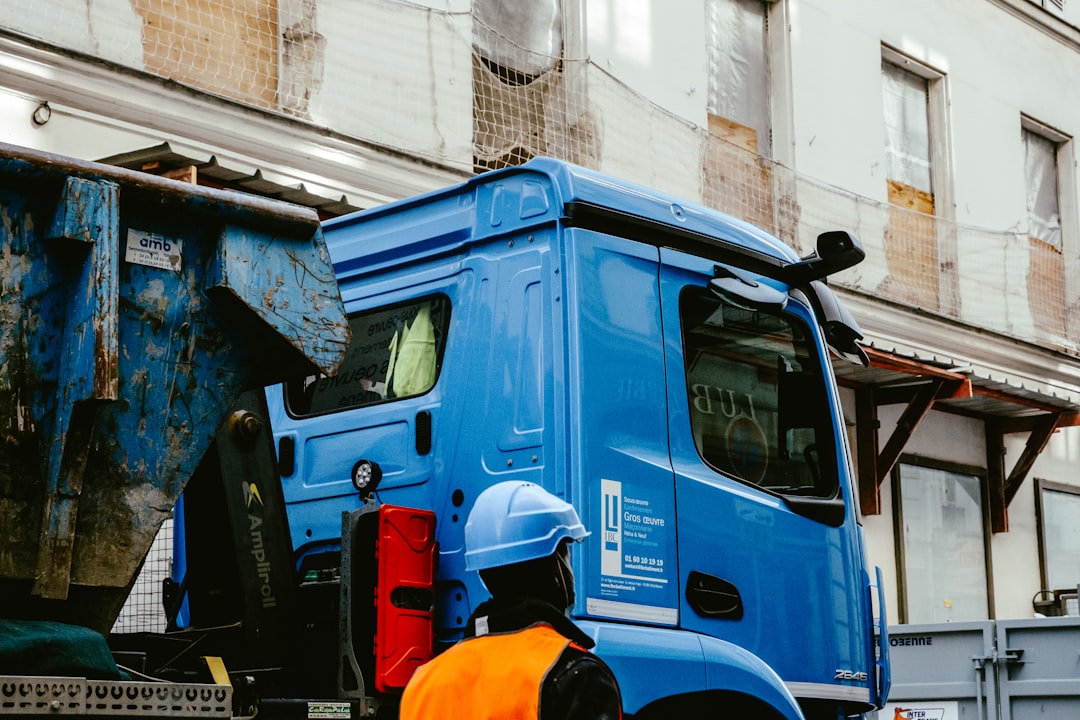

Engage prospects with a scan and streamline customer engagement with FREE QR code marketing tools by Sona – no strings attached!
Create a Free QR CodeFree consultation

No commitment

Engage prospects with a scan and streamline customer engagement with FREE QR code marketing tools by Sona – no strings attached!
Create a Free QR CodeFree consultation

No commitment
Mobile truck repair services are experiencing a major digital transformation, fueled by rising customer expectations for fast, reliable, and accessible solutions. Traditionally, businesses relied on analog marketing methods such as flyers, printed brochures, and word-of-mouth referrals. These approaches struggle to deliver measurable results or respond quickly enough to capture urgent demand, resulting in missed leads and lost revenue. Bridging the gap between physical service moments and modern digital engagement remains a challenge, leaving high-value prospects unseen and unpursued, particularly when their intent is not captured instantly.
QR codes are becoming a strategic asset in mobile truck repair marketing, providing easy and immediate entry points for clients to engage, connect, and request service with a simple scan when need is most urgent. As truckers often require emergency repairs at unpredictable times and places, the frictionless experience of scanning a QR code for real-time scheduling, contact forms, or review submissions dismantles traditional barriers to action. QR codes also enable teams to identify buying intent earlier, track previously anonymous site visitors, and create measurable digital touchpoints that enhance lead conversion and campaign optimization. For strategic tactics that drive measurable results, see QR codes in marketing.
The following sections explain how integrating QR code strategies can empower mobile truck repair businesses to resolve missed opportunities, reduce delays in follow-up, and streamline the customer journey. Learn how QR deployments can drive immediate bookings, make offline buying signals visible, and build cost-effective campaigns that resonate with today’s always-connected truck owners and fleet managers. If you are aiming to turn urgent roadside needs into scheduled work orders and long-term relationships, QR codes offer a practical, scalable way to unify physical service moments with digital precision.

Mobile truck repair companies often lose high-value opportunities because traditional marketing does not capture intent at the exact moment problems arise. A driver may spot your contact number on a vehicle or flyer, tell themselves they will call later, then move on once the crisis passes. When potential clients interact with service vehicles, roadside signage, or trade show materials without taking immediate action, those visits rarely get tracked, and sales teams cannot prioritize outreach in time to win the job.
QR codes close that gap by turning every offline impression into a point of action. Instead of asking drivers to dial a number or type a URL, you give them a single scan that opens a booking flow, live chat, or emergency dispatch request. This creates a low-friction path for busy drivers and fleet managers who do not have time to fill out long forms. It also gives your team immediate visibility into intent so they can respond faster than competitors and route the job to the right technician from the start.
Modern QR platforms like Sona QR add the operational backbone you need: automatic lead capture, source tagging, and CRM syncing. With each scan, you can trigger alerts, triage requests to dispatch, and segment leads by intent. The result is more booked appointments, faster cycle times, and fewer leads slipping away due to analog bottlenecks.

A major frustration in the mobile truck repair market is the inability to reach drivers at their most critical moment of need, which is often roadside or in a yard with a delivery deadline looming. Traditional print and outdoor advertising can create awareness, but they rarely generate immediate action, nor do they capture who is interested. When the window to respond is measured in minutes, every extra step costs you the job.
QR codes address speed, simplicity, and data capture in ways that fit the realities of trucking operations. A scan works while a driver is standing beside a disabled vehicle, at a fuel stop, or reviewing an invoice after a job. There is no app to download. The right landing page or pre-filled form means a driver can submit details, share GPS location, and request help in less than a minute. For fleet managers, QR codes can support access to maintenance history, authorize service limits, or confirm payment status instantly. For example, Mack Trucks has used QR codes to streamline access to service information and tracking; see this overview of maintenance QR codes.
By deploying QR codes thoughtfully, repair teams gain the real-time visibility required to move faster and smarter. Strong execution turns print materials and physical assets into responsive digital funnels that capture intent when it is fresh, reduce dispatch delays, and provide the analytics necessary to continually improve.

Mobile truck repair providers serve a mix of owner-operators, small fleets, and enterprise accounts. Each audience has different needs and contexts. The best QR format depends on what action you want next and how fast a user must complete it in the field.
Start by prioritizing mission-critical actions like emergency requests, booking, and payments. Then layer in relationship-building functions such as saving contact details, leaving reviews, or joining maintenance programs. Use static codes for long-lived destinations that never change, and dynamic codes for anything that needs tracking, A/B testing, or updates after print.
Dynamic QR codes, managed through platforms like Sona QR, allow you to change destinations without reprinting and to capture scan metadata. You can test alternative booking flows, adjust based on time-of-day, or segment by placement to learn which contexts produce the highest engagement.

Growth in mobile truck repair often hinges on being visible at the right moment and making the next step effortless. Many providers invest in mobile truck advertising, regional print ads, or trade show booths, but they fail to tag these assets with trackable calls-to-action. The fix is to place QR codes wherever a driver or fleet manager experiences need, curiosity, or trust. Context-aware placement ensures the code feels useful rather than promotional.
Think in terms of journey stages: awareness, consideration, conversion, and retention. A code on a billboard near a freight corridor might route to an emergency hotline and a one-tap request form. A code on a receipt might open a maintenance plan signup or review flow. By mapping each placement to an action that fits the moment, you convert more impressions into measurable pipeline.
When you map likely customer journeys and align each placement with a single high-intent next step, you reduce drop-off and capture more data. Over time, your analytics will reveal which placements drive net-new bookings and which are better for retention, enabling precise optimization.

The most valuable QR deployments are those that compress time from intent to action. In mobile truck repair, that often means converting emergencies into work orders, shaping post-repair satisfaction into reviews, and nudging one-time jobs toward recurring maintenance agreements. Each use case should align to a measurable business outcome such as faster response, higher close rates, or improved cash flow.
Start with three foundational plays: roadside emergency intake, post-service feedback, and maintenance reminders. As your team matures, layer in additional flows like warranty lookups, fleet onboarding, and referral programs. Use UTM parameters across destinations so every scan is attributable by channel, placement, and offer.
Each of these turns a standard business artifact into a digital engagement channel. Combine the use cases with dynamic QR code management so you can refine copy, destinations, and incentives without reprinting. With consistent execution, you will see higher conversion from offline interactions and a more predictable pipeline.
Every QR scan is a micro-conversion that reveals intent, location, and device context. When you deploy multiple QR codes across trucks, signage, invoices, and events, you create a rich fabric of signals. These signals can be segmented by journey stage, problem type, and buyer role to fuel precise email, SMS, and paid media retargeting.
In mobile truck repair, two distinctions matter most for segmentation. First, intent type: emergency, routine maintenance, or information gathering. Second, buyer type: owner-operator versus fleet manager. An owner-operator scanning at a fuel station on a Sunday night needs a rapid path to roadside help or same-day scheduling. A fleet manager scanning at a trade show may be evaluating SLAs or looking for cost-saving programs. Treat these segments differently and you will improve both relevance and conversion rates. For hands-on tactics, see Sona’s Playbook titled Intent-Driven Retargeting.
By transforming scans into tagged audiences, you retarget on intent rather than assumptions. Over time, the data reveals which segments convert fastest and which nurture paths drive the most closed revenue, enabling continuous program improvement.
QR codes act as connective tissue across offline and digital channels. They make print and in-person engagements measurable, accelerate response times, and unlock attribution that used to be guesswork. For mobile truck repair providers, this translates into more booked jobs from the same budget, smoother customer experiences, and better intelligence about what truly moves the needle.
A strong multichannel approach frames each QR code as a gateway to a specific next step. Keep destinations consistent with the surrounding message, and ensure the page is mobile optimized. Use a centralized platform like Sona QR to manage codes across teams, track performance, and automate follow-up in your CRM.
By integrating QR codes throughout your marketing mix, you create a single, trackable thread from first touch to booked job. This unified approach prevents fragmented experiences and makes optimization far more precise.
Launching a high-impact QR program does not require a full rebrand or heavy development. It does require clarity about the outcomes you want and diligence in designing for the physical environment. The steps below adapt common best practices to the realities of roadside service, fleet sales, and regional advertising.
Use these steps to plan, test, and scale your QR deployments. As you collect performance data, iterate on copy, placements, and offers. Over time, you will build a playbook that consistently turns scans into revenue.
Pick one or two use cases where speed and attribution will make an immediate difference. For most mobile truck repair providers, the starting point is emergency intake and post-service reviews. Define a clear outcome for each use case and choose one destination per code to avoid confusion.
Decide between static and dynamic codes based on your need for flexibility and data. Static works for permanent resources like a vCard or a general landing page. Dynamic is ideal for trackable campaigns, rotating offers, and placements you might want to change without reprinting.
Design for fast scanning in real-world conditions. Consider distance, lighting, and movement. A roadside scan is different from a scan on an invoice at a desk. Always pair the QR with an explicit call-to-action that states the benefit, not just the instruction to scan.
Roll out placements based on where you currently lose leads or lack attribution. Consider the physical context and what the scanner is likely doing. Match the destination to the moment so the next step feels natural and fast.
Measurement is what turns good ideas into reliable growth engines. Set up dashboards to monitor scan volume, conversion rate, and downstream revenue. Use the insights to refine creative, reallocate budget, and update operational workflows.
A disciplined checklist helps teams align around outcomes rather than assets. As you refine each step, you will reduce time-to-value and build a repeatable system that drives new bookings and loyal customers month after month.
A leading challenge for mobile repair providers is not knowing which campaigns drive real bookings and cash. Plenty of teams see spikes in calls after putting up a billboard or sponsoring a show, but they cannot pinpoint what worked. Without tying scans to outcomes like scheduled jobs or collected payments, it is hard to defend spend or scale the best ideas.
Modern QR analytics fixes this by pulling anonymous physical engagement into your digital reporting. The right setup attributes leads to the exact asset that sparked them, then follows the journey all the way to invoice. This is where platforms like Sona QR and Sona.com excel: they link scan data with CRM events, identity resolution, and revenue attribution, turning real-world actions into a measurable funnel.
By closing the loop from scan to revenue, you transform QR codes from a novelty into a performance channel. Analytics make it clear which assets deserve more budget, which offers resonate in the field, and where to streamline operations for faster close.
Sustained results come from treating QR codes as part of your operating system, not a one-off tactic. That means clear CTAs, consistent tagging, and pairing each scan with automated follow-up. It also means internal enablement so techs and sales staff know when and how to encourage scanning without slowing down the work.
Choose a few best practices that match the media you use most and the journeys you want to accelerate. As your program matures, add advanced tactics like segment-based retargeting and seasonal offers tied to weather or regional regulations.
These practices compound. The more consistently you tag assets, the faster your analytics will guide improvements. Over time, you will spend less to acquire more bookings and retain customers longer with proactive maintenance experiences.
The convergence of in-person service and digital engagement in mobile truck repair creates a powerful advantage for teams that move quickly. By capturing buying signals at the moment of need rather than waiting for a call or an email, you increase your odds of winning urgent jobs and creating repeat customers. QR codes make every asset an entry point to action, turning offline attention into measurable outcomes while speeding up dispatch, simplifying payments, and improving follow-up.
For providers aiming to capture missed opportunities, accelerate lead response, and unify fragmented marketing, QR codes unlock a practical path to growth. They give you real-time visibility into intent, connect scans to revenue, and enable smarter retargeting so you stay top of mind for the next job. With Sona QR handling generation, management, and attribution, your team can launch quickly, learn fast, and scale what works. Start creating QR codes for free at Sona QR.
QR codes have revolutionized mobile truck repair services by transforming how technicians and customers connect instantly and efficiently. Whether it’s streamlining access to detailed repair histories, enabling faster service requests, or providing on-the-spot troubleshooting guides, QR codes replace delays and guesswork with seamless, mobile-friendly interactions that drive operational excellence and customer satisfaction. Imagine dispatchers and drivers effortlessly scanning a code to unlock real-time updates and service records—saving time and accelerating repairs.
With Sona QR, you can create dynamic, trackable QR codes in seconds that update instantly without the need to reprint, ensuring your mobile repair teams and customers always have access to the latest information. Every scan can be measured and linked to service outcomes, helping you optimize workflows and grow your business with data-driven insights. Start for free with Sona QR today and turn every scan into faster repairs, happier customers, and increased revenue.
Use mobile truck repair services that leverage QR codes for fast, easy booking and real-time dispatch, ensuring quicker response and reliable service.
QR code integration enables instant emergency booking, reduces missed leads, speeds up dispatch, simplifies payments, and provides measurable marketing results.
Costs vary, but using QR-enabled services can reduce overhead and delays by streamlining bookings and improving operational efficiency.
Scan the QR code on the service vehicle, flyer, or signage to access a mobile-friendly booking form or emergency request that captures your location and vehicle details.
Mobile truck repair services can handle emergency roadside repairs, routine maintenance, warranty lookups, and fleet service requests facilitated by QR code interactions.
QR codes turn offline impressions into immediate actions, enabling drivers to request help quickly, submit details, and allow providers to track and respond faster.
Place QR codes on service vehicles, truck wraps, rest stops, fuel stations, invoices, business cards, billboards, and event materials to capture high-intent customers.
Use dynamic QR codes for trackable, flexible campaigns and static QR codes for permanent assets like vCards or safety information.
They track scan volume, conversion rates, and customer interactions to attribute leads, optimize placements, and improve response times and marketing ROI.
Yes, QR codes can facilitate maintenance plan signups, send reminders, gather reviews, and enable seamless payments to enhance retention.
They add QR codes to print collateral, social media, direct mail, digital signage, and events to create measurable, unified customer journeys.
Define use cases, choose code types, design and test codes for real-world conditions, deploy across high-impact channels, and track performance for optimization.
By linking QR codes to mobile-friendly forms with pre-filled information, clear CTAs, and instant dispatch notifications for quick assistance.
They place QR codes on vehicles and signage that open short forms capturing vehicle type, issue, and GPS location, triggering immediate dispatch alerts.
They segment QR scan data by intent, buyer type, location, and timing, syncing with CRM and ad platforms to deliver targeted follow-ups and campaigns.
Use Sona QR's trackable codes to improve customer acquisition and engagement today.
Create Your FREE Trackable QR Code in SecondsJoin results-focused teams combining Sona Platform automation with advanced Google Ads strategies to scale lead generation

Connect your existing CRM

Free Account Enrichment

No setup fees
No commitment required

Free consultation

Get a custom Google Ads roadmap for your business






Launch campaigns that generate qualified leads in 30 days or less.
